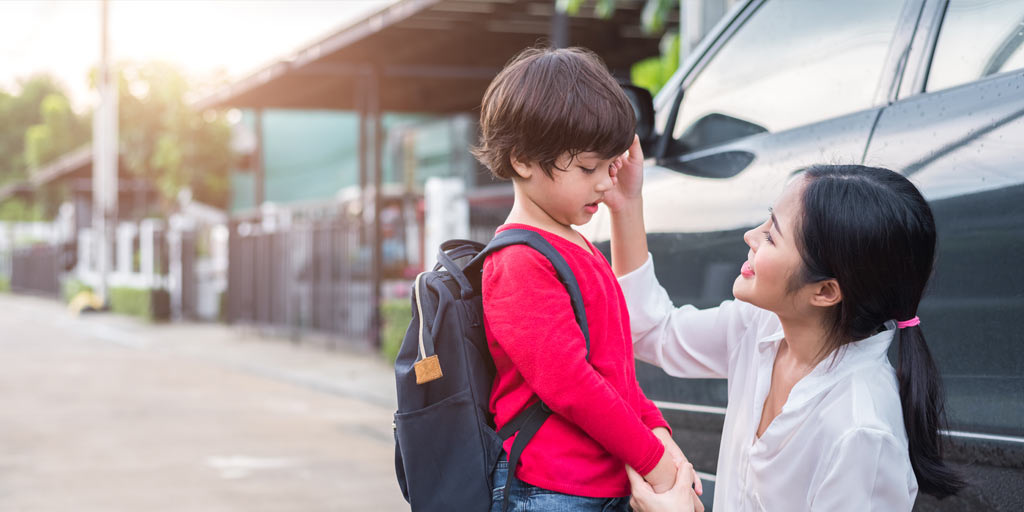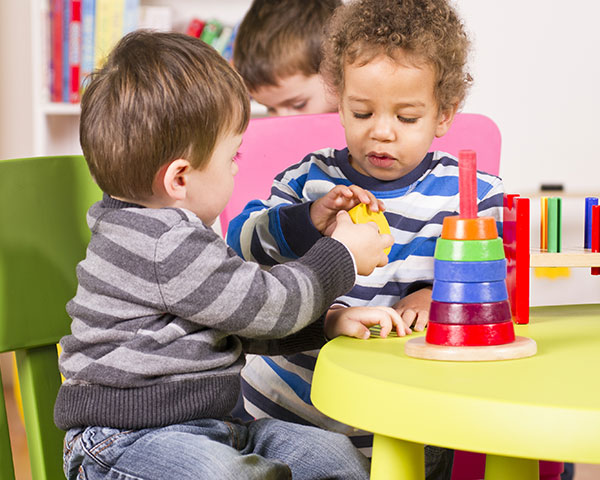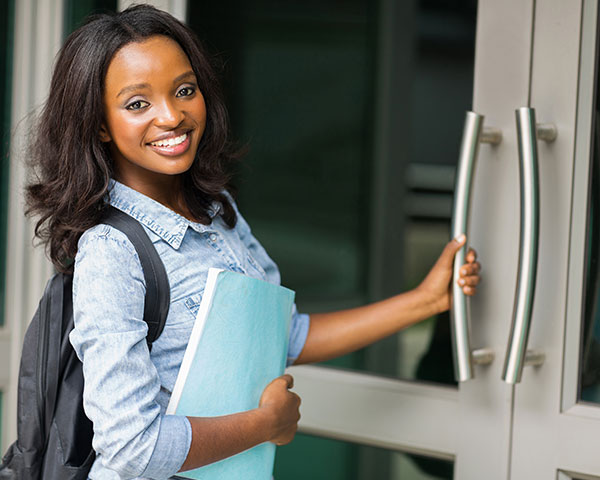Entering into a new child care arrangement can be an emotional experience for both parent and child. However, careful planning, and the knowledge that some separation anxiety and tears are normal, can make the transition from parent to caregiver as pleasant as possible. How quickly the child adapts depends on a number of factors including: the child’s age and stage of development; the child’s past experiences in the care of others; the skills of the new caregiver and appropriateness of the new setting; and the adults’ ability to prepare themselves and the child for the separation. Here are some strategies to help make the process go smoothly.
Share information with the caregiver
Share your child’s unique likes, dislikes, fears, eating/sleeping habits and anything else that will help the caregiver understand your child, ease the transition and provide care that is reasonably consistent with yours.
“Entering into a new child care arrangement can be an emotional experience for both parent and child.”
Visit the new setting with your child
Show children where they will be eating, sleeping, playing and introduce the new caregiver. Familiarity will make the actual separation easier. Preschoolers may enjoy having a book read to them about going to child care.
Shorten the first few days
Shorter visits will give your child more time to adjust and will allow him to learn by experience that you will return.
Build trust
Let your child see you and the caregiver building a friendly relationship. Include the three of you in a brief conversation or play activity. Children often use their parents as a “bridge” for developing a relationship of trust with a new adult.
Prepare the night before
An unhurried, pleasant start to the day is crucial to successful separations. If the child is old enough, involve her in the packing of lunches and the selection and laying out of clothes. For young children, a choice between two items (e.g., white or blue socks, grapes or an apple) is enough.
Something from home
Young children often use an object from home (such as a favourite teddy or blanket) to comfort themselves. Other children prefer to put a family photo or parent’s familiar scarf or glove in their pocket or backpack. Eventually, the need for these “cosies” or transition objects diminishes.
On the way, the first day
Have a calm, positive attitude. Babies and toddlers are especially sensitive to your moods and are quick to pick up any tension in your voice, face, touch or mannerisms. Sing a favourite song or talk about what the child or you will be doing today. A specific detail (“I will be taking the elevator upstairs to talk to the boss”) is far more interesting than a vague comment (“I will be working at the office all day”). In terms the child will understand, explain when and where you will be picking him up (“After lunch and sleep, I will come. You will probably be playing outside then. I will know where to find you”). A common fear is that you will not return or that you will not find each other.

Develop a “goodbye” ritual
Rituals are reassuring, especially during stressful times. Plan a special way to say goodbye, such as a wave through the window or a lipstick kiss stamped on the back of the child’s hand. You might ask your older child, “How shall we say goodbye? A kiss or a hug? One hug or two?” Giving them choices in little matters helps them feel that they have some control over what is happening.
Take time to say goodbye
Leave your child with a positive picture of what you will do together at then end of the day (“Save a big hug for me when I pick you up! Then we’ll get your brother at school”). Regardless of how tempting it may seem, never sneak out while the child is distracted. This destroys trust and will encourage the child to cling more on future occasions.
Avoid repeated goodbyes
Once you say “I’m leaving now” and go through the established goodbye ritual, then go. Stalling can make the child more fearful and clingy.
Accept and listen to negative feelings
If you or your child are feeling upset about the separation, reassure yourself that you have taken all the required steps to place your child in a safe, nurturing and stimulating setting. Telling children that they are too big to cry or that they are making a fuss over “nothing” only aggravates their fears and fails to help them understand their true feelings. Saying, “I know you are feeling sad. I will miss you too,” is more helpful.
Accept the fact that a temporary period of adjustment and some feelings of parental guilt or worry are normal. If it would help, arrange for you and the caregiver to communicate by phone during the day to “see how things are going.” Stress from separations and adjusting to new situations can be a real strain for parents and their little ones. However, with careful planning, the adjustment period can be brief.












